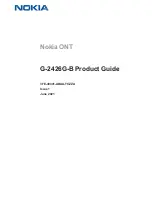
whether oral or written. The agents, employees, distributors, and dealers of the Company are not
authorized to make modification to this warranty, or additional warranties binding on the
Company. Accordingly, additional statements such as dealer advertising or presentations, whether
oral or written, do not constitute warranties by the Company and should not be relied upon.
This warranty gives you specific legal rights. You may also have other rights which vary from one
jurisdiction to another.
TROUBLESHOOTING
a.
Make sure all component and UTP cable connections are tight and not loose.
b.
Ensure the wire connections from the patch panel to the network device are using the same
wiring schemes.
c.
The quality of UTP cables has a major effect on the usable distance of transmission lines and
the quality of data transmitted or a displayed signal. Therefore, the actual transmission length is
subject to the quality of the UTP cables being used. Professional grade transmission lines cables
should be used.
d.
If interference (i.e., electrical noise) is present check all system connections including the
patch panel and all network devices are properly grounded.
e.
Further troubleshooting assistance can be found on-line at www.datatronix.biz in addition to
support from Datatronix sales engineers at (610) 429-1821, Press 3, then press 2.
LEGAL NOTICES
FCC STATEMENT PART 15
This equipment has been tested and found to comply with the limits for a Class B digital
device, pursuant to part 15 of the FCC Rules. These limits are designed to provide reasonable
protection against harmful interference in a residential installation. This equipment
generates, uses and can radiate radio frequency energy and, if not installed and used in
accordance with the instructions, may cause harmful interference to radio communications.
However, there is no guarantee that interference will not occur in a particular installation. If
this equipment does cause harmful interference to radio or television reception, which can
be determined by turning the equipment off and on, the user is encouraged to try to correct
the interference by one or more of the following measures:
• Reorient or relocate the receiving or transmitting antenna.
• Increase the separation between the equipment and affected receiver.
• Plug the switch into an outlet on a circuit different from where the switch is currently connected.
• Consult an experienced technician for help.
This device complies with part 15 of the FCC Rules. Operation is subject to the following two
conditions: 1)This device may not cause harmful interference. 2)This device must accept any
interference received, including interference that may cause
undesired operation.

































